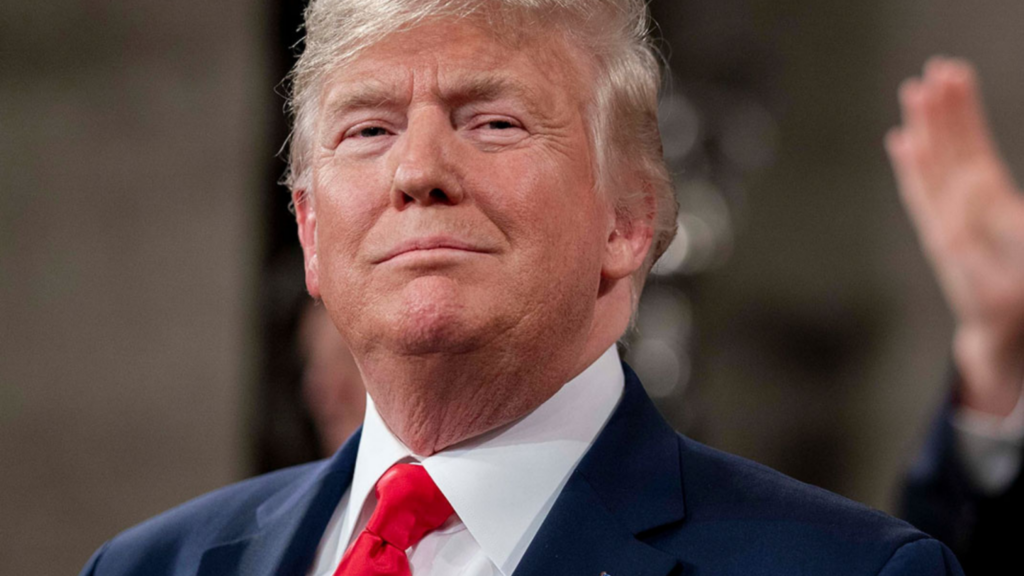Alaska Summit 2025: Can the US and Russia Rewrite the Endgame in Ukraine?
The 2025 Alaska Summit between the US and Russia marks a turning point in the Ukraine war. Can Trump and Putin broker peace, or will the conflict simply shift into a new phase of frozen instability?
A Turning Point in the War
After years of robust war rhetoric from both sides, the return to diplomacy is a necessary first step toward resolving the conflict. The battlefield stalemate after the last unsuccessful Ukrainian counteroffensive was followed by Russian tactical advances on multiple fronts, including Sumy, Kharkov, Zaporozhye, and the Donbass oblasts (FRANCE 24, 2025). Ukrainian momentum appears permanently lost after the 2022 battle for Kiev (Collins, 2025), the counteroffensive in Kharkov (Santelises, 2022), Russia’s withdrawal from Kherson City, and the weakening of the Russian Navy in the Black Sea (The Maritime Executive, n.d.). However, despite the latter, Russia continues to occupy the majority of Kherson and Zaporozhye—the so-called land bridge to Crimea—while Russian forces have made gains in the Donbass region, though control remains contested (RBC-Ukraine, 2025). Despite ongoing military support from Western powers, Ukraine’s manpower losses cannot be offset in the face of Russia’s superiority in this regard (Aris, 2025).
From Stalemate to Dialogue
Before the last aborted counteroffensive in 2023, the Ukrainians were advised by the US to focus on recapturing the South rather than trying to break Russian positions in the Donbass (Pickrell and Panella, 2024). More recently, the Kursk incursion served more as a diversion and morale boost for the West amid growing ‘war fatigue’ (Dettmer, 2024), and less—as officially stated—as a bargaining chip. Despite Ukrainian tactical strikes into Russian territory and against strategic assets (Al Jazeera, 2025a), battlefield disadvantages—combined with increasingly uncertain US support (Ali, Landay and Siebold, 2025; Nishikawa and Trebesch, 2025) and less effective EU backing (Lunday, Barigazzi and Bloom, 2025)—have undermined Ukraine’s capacity for self-sustained defense and production.
The slow and half-hearted Western support throughout 2023–2024 contributed significantly to the current situation (Zafra and McClure, 2023). Russia has continued to insist on the terms of the failed Istanbul negotiations of 2022 (Reuters, 2022) and, more recently, on a slightly softened set of demands: the renunciation of any aspiration to join NATO, the surrender of the Donbass, adherence to an implicit constitutional provision of neutrality, and a ban on Western troops on Ukrainian soil (Faulconbridge, 2025). Moreover, President Putin refuses to alter the contact line in Zaporozhye and Kherson (RBC-Ukraine, 2025).
Russia’s Red Lines, Ukraine’s Dilemmas
These red lines—described by many as unacceptable—can be juxtaposed with NATO’s proven reluctance to initiate Ukrainian membership, its struggle to provide war-defining military support, and the general lack of commitment to deploying troops in Ukraine (Ali, Landay and Siebold, 2025). While Russia is open to a US–Ukrainian mineral deal and, albeit reluctantly, to Ukraine’s eventual EU membership (Faulconbridge, 2025), Ukrainian demands appear increasingly driven by President Zelensky’s public relations needs, the pressure not to disappoint hardliners at home and abroad, and a certain degree of strategic ambiguity meant to mask the absence of a coherent plan to change the course of the war. On the Ukrainian side, the need for an interim political transition before elections can be held—when the situation eases—is paramount (Vakulina, 2025). President Zelensky seems intent on pursuing an uncompromising strategy that does not take into account the need to avoid further territorial erosion, infrastructure devastation, and the economic toll on the country (Press, 2025).
Diverging Western Approaches
The US strategy suffers from two entirely different internal approaches and shows signs of growing irritation and a desire to eventually disengage from the diplomatic process (Times, 2025). Meanwhile, the EU appears stuck in a Biden-era framework of sanctions, anti-Russia rhetoric, and exaggerated narratives about Ukraine’s chances of victory (Consilium, 2025), coupled with uncritical praise for the US president’s commitment to peace—despite the lack of any meaningful EU-led diplomatic channel with Moscow (Lunday, Barigazzi and Bloom, 2025). The European narrative emphasizes unending arms shipments to Ukraine and seeks to isolate Russia, highlighting the EU’s inability to adopt a realpolitik mindset or recognize the historical precedent of foes striking deals despite deep animosity (Muharremi, 2021). In effect, Washington is recalibrating, while Brussels remains stuck in the past.
Notably, the US has now abandoned the EU’s insistence on a prerequisite ceasefire and instead embraced Russia’s demand for a comprehensive agreement that addresses root causes and all potential triggers for future conflict (Faulconbridge, 2025). This bilateral approach appears far more pragmatic than the EU’s ineffective stance. Both the US and Russia agree that meaningful ‘security guarantees’ for Ukraine can only be provided through a Security Council-style framework—based on joint commitment and mutual understanding—resembling, to some extent, the post-conflict model used for Kosovo and Serbia (Foti, 2025; Muharremi, 2021).
The ‘Land-for-Peace’ Dilemma
In this possible scenario, the invocation of WWII and Cold War rhetoric by EU officials and politicians appears not only irrelevant but sometimes a deliberate distraction from the primary goal of ending the deadlock and resolving the conflict (Wilson, 2025). More importantly, President Zelensky’s continued rejection of a ‘land-for-peace’ formula—something he nonetheless hinted at back in 2024 (Post, 2024)—seems increasingly at odds with the aim of minimizing further human and territorial losses and even obtaining a partial ceasefire by withdrawing from the Donbass (Faulconbridge, 2025).
While any tentative agreement must include a pledge to reject provocations and invasions—whether full-scale or partial, in accordance with international law (Consilium, 2025)—this major shift in US policy toward Russia could open the door to broad, ad hoc cooperation (Al Jazeera, 2025b). The US recognizes that the Eurasian nature of Russian foreign policy is a permanent feature (Times, 2025). However, as demonstrated in other regional crises, the Trump administration increasingly prioritizes transactionalism, business, and trade—not only as tools to outcompete China, but also to resolve intractable conflicts, as seen in the Armenia–Azerbaijan negotiations (Consilium, 2025) and, earlier, the 2020 Serbia–Kosovo deal (Muharremi, 2021). The EU could contribute to this effort by abandoning its anti-Russia posture, opening a diplomatic dialogue, and focusing—together with the US—on Ukraine’s reconstruction and eventual EU membership (Nishikawa and Trebesch, 2025).
Toward a Fragile Peace?
Ukraine needs strong security guarantees that take into account its past traumas, the legitimate lack of trust in Russia’s commitment to non-aggression (Vakulina, 2025), and the need for war reparations (Wilson, 2025). A joint US, EU, and Russian commitment to reconstruction and reparations could form a key part of such guarantees (Al Jazeera, 2025a). Any agreement must contain robust deterrents against renewed aggression—such as joint monitoring missions, third-party peacekeeping forces, or economic penalties that are automatically triggered in the event of violations (Ali, Landay and Siebold, 2025). While war reparations are a legitimate Ukrainian demand, any agreement would have to realistically balance moral accountability with political feasibility—potentially through phased economic contributions or reconstruction funds jointly administered by international bodies (Foti, 2025). UN mechanisms have repeatedly proven insufficient or flawed, as demonstrated in the cases of Armenia, Kosovo, and Lebanon (Muharremi, 2021). This underscores the need for both parties to commit seriously and politically to a comprehensive agreement. Ultimately, any sustainable deal must balance accountability with pragmatism—trading sanctions relief for security guarantees and reconstruction aid (Faulconbridge, 2025). Whether that balance can be struck will determine if the Alaska Summit marks the beginning of peace—or just another pause in a long war.
Bibliography
- Al Jazeera (2025) Russia gains in east before Trump-Putin Summit, Ukraine says holding off, Al Jazeera. Available at: https://www.aljazeera.com/news/2025/8/15/zelenskyy-decries-russias-attempt-to-gain-edge-ahead-of-summit-with-us
- Ali, I., Landay, J. and Siebold, S. (2025) US, NATO planners start to craft Ukraine Security Guarantee Options | Reuters, Reuters. Available at: https://www.reuters.com/world/europe/us-nato-planners-start-craft-ukraine-security-guarantee-options-2025-08-19/
- Aris, B. (2025) Ukraine’s military death tolls underestimated, Russia recruits sufficient to cover its frontline losses, bne IntelliNews. Available at: https://www.intellinews.com/ukraine-s-military-death-tolls-underestimated-russia-recruits-sufficient-to-cover-its-frontline-losses-392172/
- Collins, L. (2025) The battle of kyiv, three years on: An urban warfare project case study – modern war institute, Modern War Institute – At West Point. Available at: https://mwi.westpoint.edu/the-battle-of-kyiv-three-years-on-an-urban-warfare-project-case-study/
- Consilium. (2025). Ukraine/Russia: Statement by the High Representative on behalf of the European Union on call for ceasefire. [online] Available at: https://www.consilium.europa.eu/en/press/press-releases/2025/05/10/ukrainerussia-statement-by-the-high-representative-on-behalf-of-the-european-union-on-call-for-ceasefire/?utm_source=chatgpt.com
- Dettmer, J. (2024) Zelenskyy was urged not to invade Kursk. he did it anyway., POLITICO. Available at: https://www.politico.eu/article/kursk-russia-incursion-objections-war-in-ukraine-volodymyr-zelenskyy/
- Faulconbridge, G. (2025). Exclusive: Putin’s demand to Ukraine: give up Donbas, no NATO and no Western troops, sources say. Reuters. [online] 22 Aug. Available at: https://www.reuters.com/world/china/putins-demand-ukraine-give-up-donbas-no-nato-no-western-troops-sources-say-2025-08-21/.
- Foti, F. (2025). Manoeuvring Uncertainty: Ukraine’s Security Guarantees in the Trump Era. [online] Modern Diplomacy. Available at: https://moderndiplomacy.eu/2025/03/22/manoeuvring-uncertainty-ukraines-security-guarantees-in-the-trump-era/
- FRANCE 24 (2025) Russia makes biggest 24-hour advance in eastern Ukraine ahead of Alaska summit, France 24. Available at: https://www.france24.com/en/europe/20250813-russia-makes-biggest-24-hour-advance-in-eastern-ukraine-ahead-of-alaska-summit
- Key takeaways from Alaska summit from Sky News Correspondents (2025) Sky News. Available at: https://news.sky.com/story/trump-putin-and-no-deal-for-ukraine-the-view-from-our-correspondents-13412439
- Lunday, C., Barigazzi, J. and Bloom, D. (2025) Europe has no real solutions on Security Guarantees for Ukraine, POLITICO. Available at: https://www.politico.eu/article/ukraine-russia-donald-trump-nato-europe-leaders-us-politics-security-defense/
- Muharremi, R. (2021). The ‘Washington Agreement’ Between Kosovo and Serbia | ASIL. [online] www.asil.org. Available at: https://www.asil.org/insights/volume/25/issue/4/washington-agreement-between-kosovo-and-serbia.
- Nishikawa, T. and Trebesch, C. (2025) Ukraine Support Tracker: Europe now leading Spender on Weapons Production for Ukraine, Kiel Institute. Available at: https://www.ifw-kiel.de/publications/news/ukraine-support-tracker-europe-now-leading-spender-on-weapons-production-for-ukraine/
- Pickrell, R. and Panella, C. (2024) Ukraine’s top general wanted a bold counteroffensive a year earlier that the US thought was too risky. it might have reshaped the war., Business Insider. Available at: https://www.businessinsider.com/ukraine-wanted-a-bold-counteroffensive-but-us-disagreed-book-2024-1?utm_source=chatgpt.com
- Post, K. (2024). ‘We Don’t Have the Strength’ – Zelensky Says Ukraine Can’t Reclaim Crimea, Donbas Militarily. [online] Kyiv Post. Available at: https://www.kyivpost.com/post/44119?utm_source=chatgpt.com
- Press, T.A. (2025). Kremlin says a 2022 Ukrainian decree bans Zelenskyy from talks with Putin. [online] AP News. Available at: https://apnews.com/article/russia-ukraine-war-putin-zelenskyy-peace-kremlin-4b562918462856b9020147fc50b37b16.
- RBC-Ukraine. (2025). Kremlin refuses to cede Kherson and Zaporizhzhia despite ceasefire talks – Washington Post. [online] Available at: https://newsukraine.rbc.ua/news/kremlin-refuses-to-cede-kherson-and-zaporizhzhia-1754823705.html?utm_source=chatgpt.com
- RBC-Ukraine. (2023). No one has right to negotiate with Putin without Ukraine – Zelenskyy. [online] Available at: https://newsukraine.rbc.ua/news/no-one-has-right-to-negotiate-with-putin-1734518325.html?utm_source=chatgpt.com
- Reuters (2022). Ukraine offers neutrality in exchange for NATO-style security guarantees at Russia talks. Reuters. [online] 29 Mar. Available at: https://www.reuters.com/world/europe/ukraine-offers-neutrality-exchange-nato-style-security-guarantees-russia-talks-2022-03-29/.
- Russia-ukraine war: List of key events, day 1,275 (2025) Al Jazeera. Available at: https://www.aljazeera.com/news/2025/8/22/russia-ukraine-war-list-of-key-events-day-1275
- Santelises, A. (2022) The Ukrainian Kharkiv counter-offensive and information operations | the cove, The Cove. Available at: https://cove.army.gov.au/article/ukrainian-kharkiv-counter-offensive-and-information-operations
- Strained by war, the Russian Navy is a shadow of its former self (no date) The Maritime Executive. Available at: https://maritime-executive.com/editorials/strained-by-war-the-russian-navy-is-a-shadow-of-its-former-self
- Times, T.M. (2025). Lavrov Says Ukraine Security Talks ‘Road to Nowhere’ Without Russian Involvement. [online] The Moscow Times. Available at: https://www.themoscowtimes.com/2025/08/20/lavrov-says-ukraine-security-talks-road-to-nowhere-without-russian-involvement-a90297
- Ukraine bombs Russian bases: Here are some of Kyiv’s most audacious attacks (2025) Al Jazeera. Available at: https://www.aljazeera.com/news/2025/6/2/ukraine-bombs-russian-bases-here-are-some-of-kyivs-most-audacious-attacks?utm_source=chatgpt.com
- Vakulina, S. (2025). Kyiv and Moscow already tried negotiating, but that didn’t go well. [online] euronews. Available at: https://www.euronews.com/2025/02/05/peace-talks-ukraine-and-russia-already-tried-negotiating-but-that-didnt-go-well?utm_source=chatgpt.com.
- Wilson (2025). Proposed Ukraine land concessions are Putin’s trap, EU top diplomat tells BBC. [online] 22 Aug. Available at: https://www.bbc.com/news/articles/cp8zdezm507o.
- Zafra, M. and McClure, J. (2023) Mapping Ukraine’s counteroffensive, Reuters. Available at: https://www.reuters.com/graphics/UKRAINE-CRISIS/MAPS/klvygwawavg/#four-factors-that-stalled-ukraines-counteroffensive



